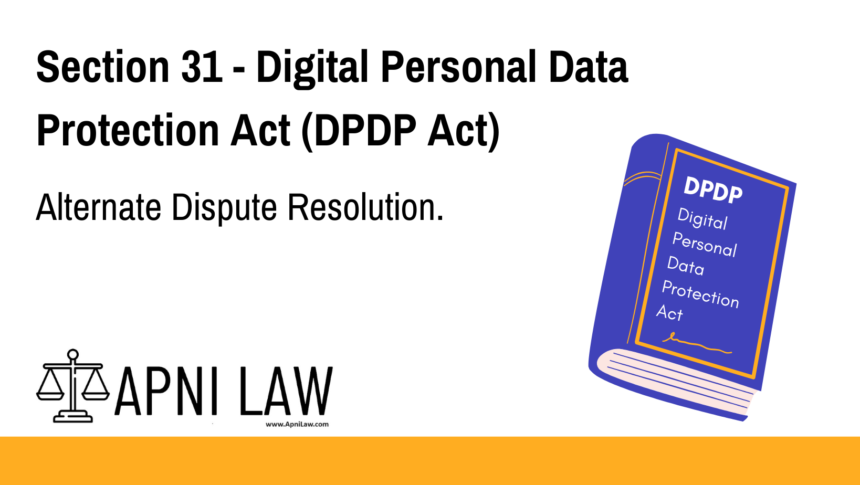Code: Section 31 – DPDP Act, 2023
If the Board is of the opinion that any complaint may be resolved by mediation, it
may direct the parties concerned to attempt resolution of the dispute through such mediation
by such mediator as the parties may mutually agree upon, or as provided for under any law
for the time being in force in India.
Explanation of Section 31 – DPDP Act
Section 31 of the Digital Personal Data Protection Act, 2023, provides an important mechanism for resolving disputes through mediation. This provision allows the Data Protection Board to direct parties involved in a complaint to attempt resolution through an agreed-upon mediator.
The goal is to streamline the resolution process by avoiding prolonged litigation, especially for issues where an amicable settlement is possible. It promotes the principles of alternative dispute resolution (ADR) in the realm of digital data protection.
Key Highlights
- The Data Protection Board has the authority to suggest mediation if it deems it appropriate.
- Parties may mutually agree upon a mediator or follow the process defined under existing Indian mediation laws.
- This mechanism reduces litigation and promotes faster, more collaborative dispute resolution.
Illustration
Example 1: Dispute Over Improper Consent
A user files a complaint that a digital service provider collected their data without valid consent. The Board reviews the complaint and believes the matter can be resolved outside of a formal hearing. It directs the parties to consider mediation. Both parties agree and resolve the issue through a mutually chosen mediator.
Example 2: Allegation of Misuse of Data
A company is accused of misusing personal data for marketing purposes. Upon reviewing the case, the Board concludes that the issue may be resolved through dialogue. The Board refers the matter to mediation, which successfully leads to a resolution.
Common Questions and Answers on Section 31 DPDP
1. What is the purpose of Section 31?
The purpose of Section 31 is to encourage the resolution of data protection disputes through mediation instead of formal adjudication, wherever appropriate.
2. Who appoints the mediator?
The mediator may be chosen by mutual agreement between the parties. If the parties do not agree, the mediator may be appointed under any relevant Indian mediation law.
3. Is mediation mandatory under Section 31?
No, mediation is not mandatory. It is a recommendation or direction from the Board when it believes that the dispute can be settled amicably.
4. Can serious data protection violations be mediated?
Generally, mediation is suited for less complex or non-criminal disputes. Serious violations may still require formal adjudication and penalties under the DPDP Act.
5. What happens if mediation fails?
If mediation does not result in a resolution, the matter can proceed under the normal adjudicatory process as laid down in the Act.
Conclusion
Section 31 of the Digital Personal Data Protection Act, 2023 reflects a modern approach to data protection enforcement. By promoting mediation as a dispute resolution tool, it not only reduces the burden on regulatory bodies but also provides parties with a faster and more cost-effective path to justice. This section strengthens India’s digital governance framework by encouraging cooperation and dialogue in resolving personal data-related issues.
For more legal explanations and expert guidance on the DPDP Act, visit ApniLaw.








